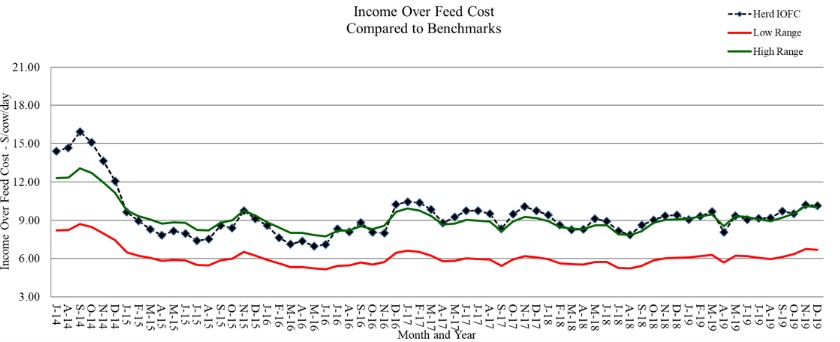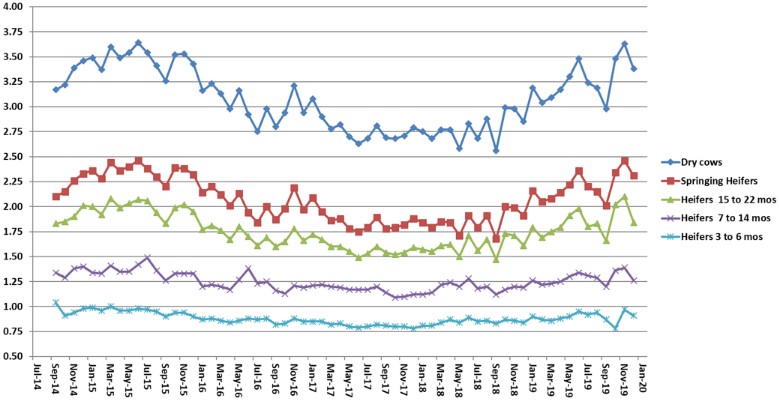Rather than simply examining total amounts of fertilizer farmers apply per province, we should consider application rates
Nicholas Bannon and Alfons Weersink
Department of Food, Agriculture and Resource Economics
University of Guelph
In recent articles, we have explored changes in fertilizer usage over time across Ontario. Although the acres of Ontario cropland receiving fertilizer have only changed slightly, the estimated fertilizer use doubled between 2008 and 2018. This finding likely means that, on average, Ontario producers are applying fertilizer more intensely. But how much more intense have fertilizer application rates become?
In order to answer this question, we must examine both the area of cropland receiving fertilizer and the estimated amount of fertilizer applied. By dividing the total amount of fertilizer applied by the total area on which farmers applied fertilizer, we get a fertilizer application rate in kilograms/acre (kg/ac).
Since Statistics Canada only collects data on cropland area receiving fertilizer during the census years and the department only has data on fertilizer expenditures since 2002, we can estimate fertilizer application rates for three years: 2006, 2011 and 2016. The fertilizer rates in kg/acre for these three years are shown in Figure 1 for Ontario and in Figure 2 for Saskatchewan.
FIGURE 1: Ontario fertilizer rates (kg/ac) for 2006, 2011 and 2016

As expected, fertilizer rates in Ontario have become more intense. Between 2006 and 2016, fertilizer rates in Ontario increased by 20 per cent, growing from 101 kg/ac in 2006 to 122 kg/ac in 2016. Growth was not consistent, however, as a decline of 11 per cent occurred between 2006 and 2011 when rates fell to 91 kg/ac.
Despite the differences in fertilizer application rates, all provinces east of Ontario experienced similar underlying trends in fertilizer rate changes. Each of the provinces in Eastern Canada saw a decline in application rates between 2006 and 2011 but an increase between 2006 and 2016.
Although changes in fertilizer rates in most of the Western Canada provinces followed a similar pattern to their eastern counterparts, Saskatchewan did not.
Saskatchewan fertilizer rates increased almost linearly between 2006 and 2016. Rates increased by 14 per cent between 2006 and 2011 and an additional 19 per cent between 2011 and 2016. As of 2016, Saskatchewan farmers applied 50 kg of fertilizer per acre compared to 37 kg/ac in 2006.
FIGURE 2: Saskatchewan fertilizer rates (kg/ac) in 2006, 2011 and 2016

While Saskatchewan farmers apply nearly double the amount of total fertilizer compared to Ontario producers, the intensity at which Saskatchewan farmers apply that fertilizer is considerably less. This difference is largely attributable to the types of crops and their nutrient needs in Saskatchewan versus Ontario.
The latter province grows 60 per cent of all Canadian corn and has over two million acres dedicated to this crop. Saskatchewan, in contrast, grows very little corn but cultivates over 50 per cent of all wheat and canola in Canada, dedicating about 25 million acres of cropland to these crops.
Nutrient demands for corn are significantly higher than for wheat and canola, which influences the rate at which farmers apply fertilizer.
Ontario corn producers should apply 64.4 kg/ac of nitrogen (N) and 233 kg/ac of urea-ammonium nitrate (UAN) fertilizer to their fields, OMFARA’s Publication 60 recommends.
In contrast, Saskatchewan farmers should apply only 44 kg/ac of N for spring wheat, and 48 kg/ac of N for durum wheat and canola, the government of Saskatchewan recommends. Since Saskatchewan has more than four times the amount of cropland as Ontario, Saskatchewan producers apply more fertilizer in total but the rate at which they apply fertilizer is less intense due the differences in crop types.
To summarize, it is important to look beyond the aggregate numbers and recognize that, even though Ontario producers use significantly less total fertilizer than Saskatchewan farmers, Ontario producers apply fertilizer much more intensely. This finding presents an opportunity for initiatives such as the 4Rs to help farmers evaluate their management practices and ensure they are applying fertilizer efficiently.
fotokostic/iStock/Getty Images photo